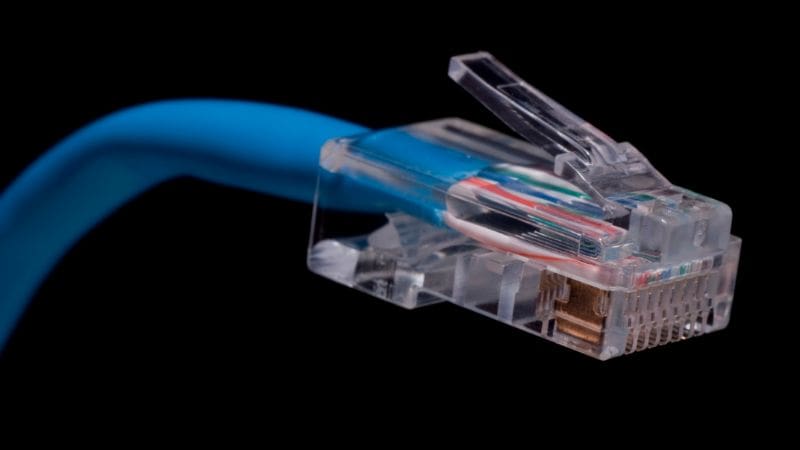
Why Are RJ45 Connectors Trending Again at Tech Shows in 2025?
Walk into any tech show this year, and alongside AI, edge computing, and green data centres, you’ll notice a surprising comeback—the RJ45 connector. This little plug, best known for Ethernet cables, is having a moment in 2025.
It might feel unexpected in an age dominated by 5G, Wi-Fi 6E, and cloud everything, but here’s the thing: the tech world is waking up to the fact that wireless isn’t always the answer. Stability, security, and speed still matter. And RJ45 connectors deliver those better than ever. Let’s break down why these connectors are back in the spotlight and what it means if you’re working in IT, networking, or just trying to buy electronic components smartly.
What is an RJ45 Connector?
The RJ45 is an 8-pin modular plug, initially designed for telephone and Ethernet networking. It’s most commonly used to connect computers, servers, routers, and switches with Cat5, Cat6, or Cat7 cables. So far, so simple.
But what’s changed in 2025 is how it’s being used—and why.
Why is There a Renewed Interest in RJ45 at Tech Shows?
1. Demand for Ultra-Reliable Connections
The rise of AI workloads, real-time processing, and edge computing means networks can’t afford packet drops or latency spikes. RJ45-based wired Ethernet still offers lower latency and more consistent throughput compared to most wireless alternatives.
Case in point: At CES 2025, multiple demos involving generative AI and cloud robotics were powered by wired RJ45 Ethernet—because wireless just couldn’t keep up under the demo conditions.
According to Statista, global average fixed broadband speeds (wired) reached over 100 Mbps in 2024, while average mobile speeds still lagged behind at 55 Mbps. That matters when milliseconds make a difference.
2. Security-First IT Strategies
With cyberattacks on the rise, companies are getting stricter about network access. Wired connections with RJ45 connectors provide more physical control over who can plug in.
3. More Smart Devices = More Noise
Wi-Fi congestion is real. Homes and offices are now packed with IoT devices—everything from smart thermostats to video doorbells. They all compete for bandwidth. So, professionals are returning to wired solutions for the essentials: desktop workstations, VoIP phones, and conference systems. Using RJ45 connectors to hardwire the priority devices reduces wireless clutter.
4. Affordable and Scalable Networking
RJ45-based cabling remains cost-effective—especially when you’re scaling up. Whether it’s setting up a new office or a temporary event space, running Cat6 cable and snapping in an RJ45 is often faster and cheaper than deploying managed wireless systems.
And if you’re looking to buy electronic components for your infrastructure, RJ45 sockets, patch panels, and cables are widely available and usually cheaper than the alternatives.
Are RJ45 Connectors Keeping Up with New Tech Standards?
Yes. Modern RJ45 connectors aren’t the same as the ones you saw in 2005.
Today’s RJ45 connectors support:
- 10 Gigabit Ethernet (10GBASE-T) over Cat6A or Cat7 cabling
- Power over Ethernet (PoE++) to power devices like security cameras or wireless access points
- Shielded cabling for better EMI protection in industrial and high-density environments
And in data centres, hybrid patch systems are combining RJ45 with fibre for mixed workloads, giving engineers flexibility without ditching the connector entirely.
Where Are RJ45 Connectors Being Used in 2025?
- Edge Data Centres and AI Hubs – Small footprint data centres close to urban areas are expanding fast. Many are using RJ45-based Ethernet as part of their low-latency, high-speed infrastructure—especially for internal comms between servers and switches.
- Events, Streaming, and AV – Live event tech teams prefer RJ45 for reliability. Whether it’s powering IP cameras or high-res streaming kits, a wired link avoids the pitfalls of congested event Wi-Fi.
- Industrial Automation – Factories and smart warehouses often rely on ruggedised RJ45 setups. These deliver both data and power (via PoE) to sensors, robotic arms, and vision systems.
- Universities and Education – Many UK universities are doubling down on hybrid infrastructure, blending wireless for students with wired RJ45 for labs and admin areas.
Is This Just a Short-Term Trend?
Not likely. While the market will keep moving toward wireless for convenience, wired networking has carved out a permanent niche in:
- Cybersecure environments
- AI processing zones
- Video production studios
- Remote or rural areas with unreliable wireless signals
Also, the EU and UK are both moving toward stricter energy regulations. Wired connections use less energy per data bit than wireless, especially at scale. That will keep RJ45 connectors relevant as sustainability becomes a business mandate.
How Do You Choose the Right RJ45 Components Today?
Here’s what to check if you’re planning to upgrade or expand your network:
- Cable Category: Go for Cat6A or Cat7 for futureproofing. Cat5e might still work, but it caps out at 1 Gbps and is fading fast.
- PoE Support: Need to power cameras or phones? Choose connectors and patch panels that support PoE+ or PoE++.
- Shielding & Durability: For industrial or high-interference environments, use shielded twisted pair (STP) cables and metal-shielded RJ45 jacks.
- Bulk Savings: If you’re buying for an entire building or project, it makes sense to buy electronic components in packs. Most UK suppliers offer better rates at quantity breaks of 10, 50, or 100.
Final Thoughts: It’s Not About “Old vs. New”—It’s About Fit for Purpose
The return of RJ45 isn’t a nostalgia trip. It’s a rational response to real-world tech demands. When speed, stability, and security are top priorities, RJ45 connectors are still the right tool for the job. As tech becomes more hybrid—blending wireless flexibility with wired dependability—expect RJ45 to keep showing up in conversations, at booths, and inside next-gen networking setups. So if you’re planning your subsequent IT rollout, AV project, or smart home install, don’t write off Ethernet just yet. Instead, make space on the table for a few good RJ45 connectors.



